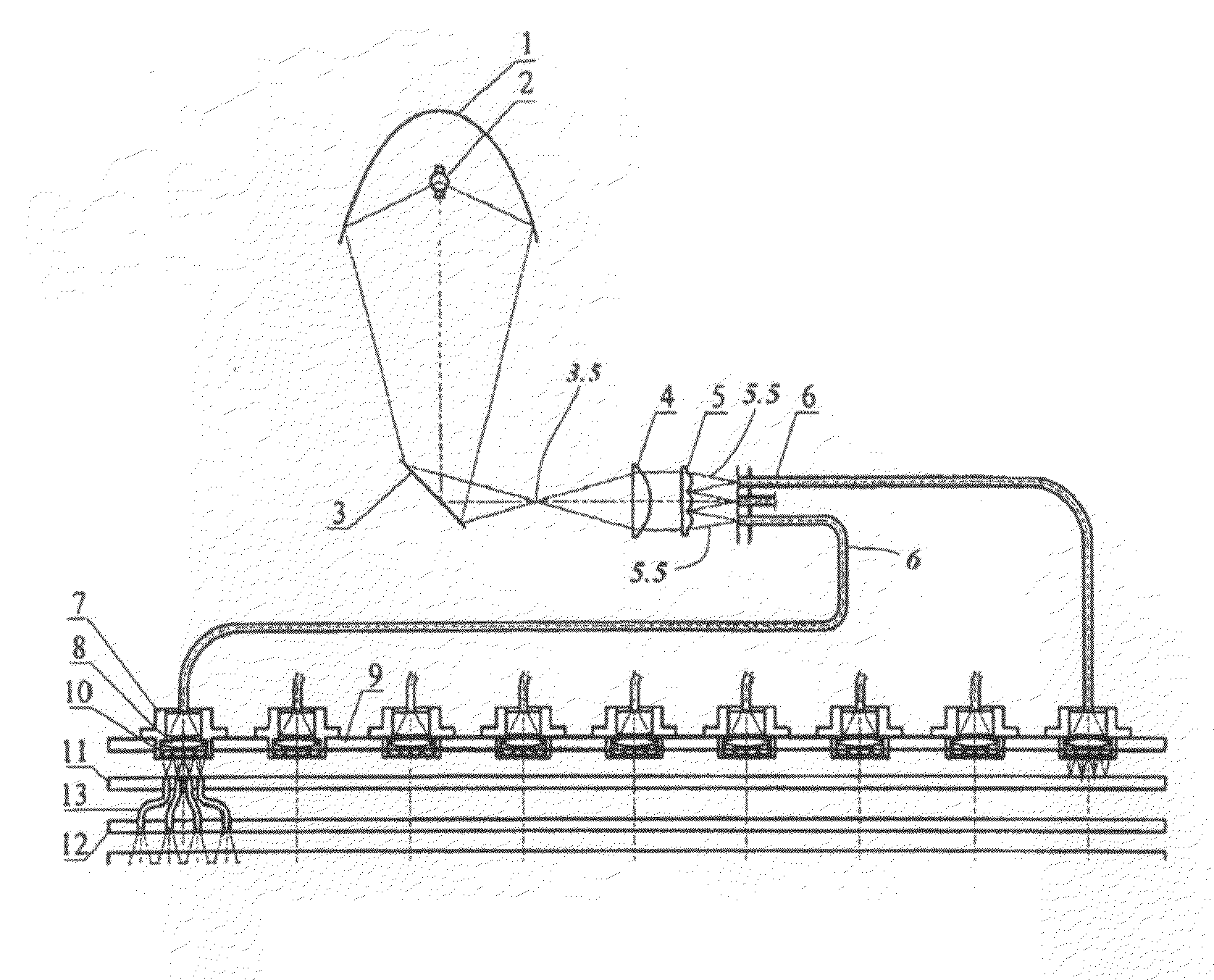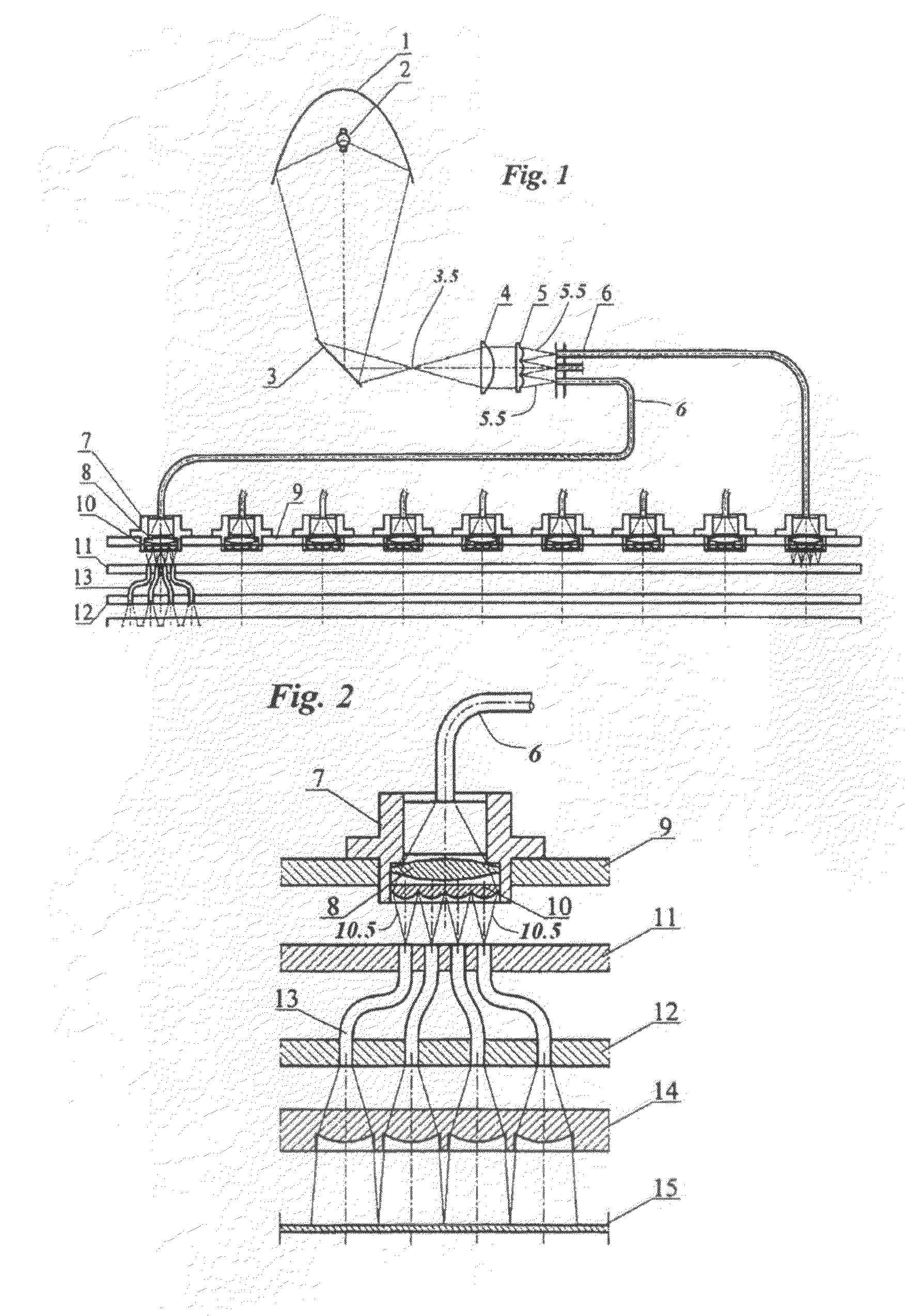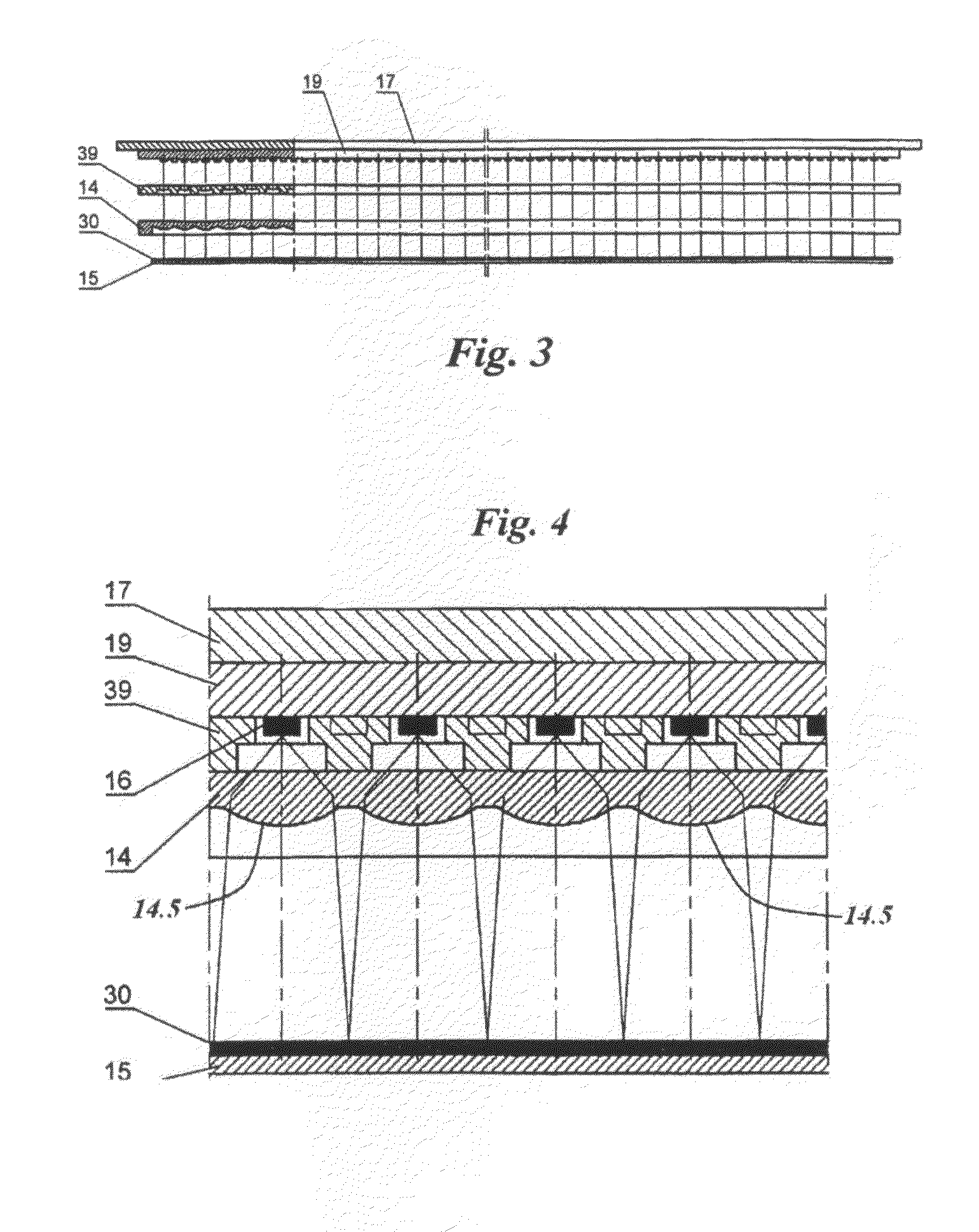Process and apparatus for the production of collimated UV rays for photolithographic transfer
a technology of collimated uv rays and photolithographic transfer, which is applied in the direction of optics, circuit masks, instruments, etc., can solve the problems of large space requirements of optics and high cost, and achieve the effect of reducing the optical length of downstream optics
- Summary
- Abstract
- Description
- Claims
- Application Information
AI Technical Summary
Benefits of technology
Problems solved by technology
Method used
Image
Examples
Embodiment Construction
)
[0038]FIGS. 1, 2 show the UV collimation optics based on liquid light guides. In this embodiment, the UV radiation of a mercury short arc lamp (2) is concentrated at a focal point (3.5) with the aid of an ellipsoid (1). A cold light mirror (3) is disposed in front of the focal point (3.5) and deflects the beam (by 90° in the embodiment illustrated) toward a collimation lens (4). The collimation lens (4) concentrates the UV radiation onto a raster lens plate (5) that splits the beam into a plurality of split beams (5.5) and focuses the split beams (5.5) onto the entrance ports (6.5) of a multiliquid light guide (6).
[0039]The liquid light guides (6) transmit the UV radiation at low loss toward the base plate (9) of a scanning slide (50). Each liquid light guide (6) ends in a flange (7) that is fastened on the base plate (9). The component UV radiation beam of a liquid light guide (6) is concentrated with the aid of a 2nd collimation lens (8) onto a second raster lens plate (10). The ...
PUM
 Login to View More
Login to View More Abstract
Description
Claims
Application Information
 Login to View More
Login to View More - R&D
- Intellectual Property
- Life Sciences
- Materials
- Tech Scout
- Unparalleled Data Quality
- Higher Quality Content
- 60% Fewer Hallucinations
Browse by: Latest US Patents, China's latest patents, Technical Efficacy Thesaurus, Application Domain, Technology Topic, Popular Technical Reports.
© 2025 PatSnap. All rights reserved.Legal|Privacy policy|Modern Slavery Act Transparency Statement|Sitemap|About US| Contact US: help@patsnap.com



